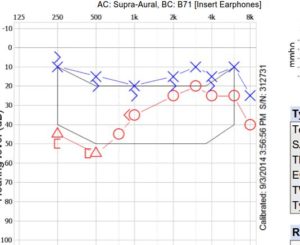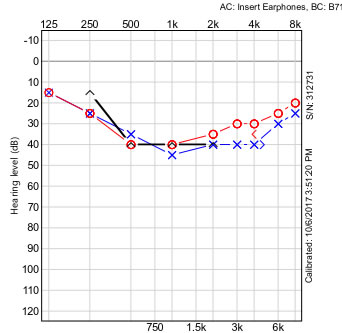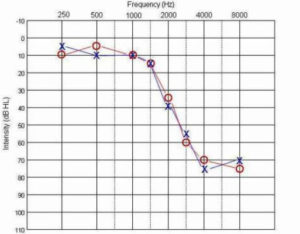How To Book A Free Hearing Test And What’s Involved
Booking a hearing test: 10 things to expect throughout the process
There could be a number of reasons why you’ve decided to have a hearing test. Your hearing is an important part of your well-being and should be checked regularly. Just like you get your eyes and teeth checked – you should get your hearing assessed yearly. You may have noticed you’re not hearing as well in social situations, particularly when there’s some background noise. You ask for repeats and it’s getting a little embarrassing so you want to make sure your hearing is at its optimal best.
Perhaps you’re experiencing ringing noises in your ears (tinnitus) or your partner tells you the TV is too loud. Family and friends may be suggesting you need a hearing test. If this is you – it’s time to act.
Signs you need a hearing test
 The first and most common sign you should get a hearing test is when you have difficulty hearing those around you and often have to ask people to repeat themselves.
The first and most common sign you should get a hearing test is when you have difficulty hearing those around you and often have to ask people to repeat themselves.
Over 50% of the Australian population between 60 and 70 report that they suffer from some sort of hearing loss.
Noisy environments can often exacerbate the symptoms of hearing loss and make it difficult for those suffering with even a mild form of hearing loss to hear what people are saying. If you find yourself having difficulty having a conversation in a noisy environment you should get a hearing test.
One common sign of hearing loss is when those around you complain that you are watching the TV or listening to the radio too loud while you still have difficulty hearing. If you find yourself increasing the volume of the TV in order to hear correctly, it may be sign to seek a hearing test. One other sign you may need to get your hearing checked is ringing in the ears.
This may be caused by Tinnitus or early signs of hearing loss.
Preparing for your hearing test
It’s best to be prepared for your hearing test so that your audiologist will be able to give you the most assistance possible. Here are just a few ways for you to prepare.
- Have a think about the type of hearing loss you are experiencing, is it only in certain situations? Is it limited to specific pitches? do you suffer more in certain environments? The more information you give your audiologist the better they can diagnose and help your hearing loss.
- Make a list of medication you are on, are you taking any anti-biotics or other medication which could be affecting your hearing? Have you had any surgery on your ears previously or any injuries or previous cases of hearing loss when you were younger.
- Have a list of questions that you want to ask your audiologist, anything you may be worried about or have concerns about your audiologist is there to help you and answer any questions you may have.
4 MainTypes of hearing Tests
- Pure Tone – Pure Tone The pure tone hearing test is the most simplest type, different pitches of sound are played at different frequencies to determine if there is any hearing loss. Headphones are normally used for this type of test
- Speech Testing– Speech Testing is a similar hearing test to the pure tone test and normally used to corroborate those results. Word’s at various volumes are played to the patient and the patient is asked to repeat the words.
- Middle Ear -The testing of the middle ear is also a common hearing test and is used to measure and that the middle ear is functioning correctly. The audiologist can check the fluid as well as the acoustic reflex of the middle ear.
- Auditory Brain–Stem– The Auditory Brain-stem response hearing test is done via electrodes placed on the patient’s head. This is normally done when it’s suspected the hearing loss originates from the brain, rather than the ear and children who have difficulty with conventional hearing tests.
What’s involved with booking a hearing test?
So how do you book a hearing test with Hearing Choices? It’s very easy but firstly it’s important to understand how the process works.
- A hearing test is generally carried out in a Hearing Clinic. It may be completed with you sitting in a sound proof booth or in a sound treated office. This is to eliminate background or ambient noise interfering with the test. Some people aren’t comfortable with sitting in a small sound proof booth (often resembling a fridge!). That’s okay. Just tell your clinician you’d prefer the booth door left open. It won’t have a major effect on the results. Some clinics also offer a home testing service, using portable equipment. For some people this is preferable to travelling to a clinic. If you’d like a home visit, let us know when booking. Having a quiet room in your home will assist with a home visit hearing assessment.
- A hearing test booked through Hearing Choices will be carried out by an audiologist or audiometrist who meets the Australian Hearing Healthcare Professionals Scope of Practice and is a clinician certified to carry out hearing assessment in Australia.
- If you’ve decided to book a hearing test through Hearing Choices we can organise a test for you, no matter where you are in Australia. We’ll book the appointment with a clinician in your local area, or organise a home visit for you.
- Before you attend your test, get your doctor to check you don’t have any wax blocking your ear canals. Excess wax can affect the test results. Some Hearing Clinics do have ear wax removal equipment, but this is not always the case, so it’s best to get this checked prior to your appointment.
- It’s also a good idea to think about, or even make note of, the situations where you have most difficulty hearing. Your clinician will ask you this question, so give them as much information as you can on your communication requirements.
- The clinician will also want to know of any medications you’re taking and if you’ve had any recent illnesses, ear surgery or family history of hearing loss. Come prepared with this information to your appointment. Also think about anything you’d like to ask your clinician. Perhaps you have a friend with a certain type of hearing aid and you’d like to know if it would be suitable for you? Your clinician will be happy to discuss your preferences to ensure you’re satisfied with the hearing device selected for you.
- After the case notes have been completed, the hearing test will begin. Generally the clinician will look in your ear canals with an otoscope to check your ears are clear of wax and there are no other abnormalities that may affect the test results, such as a perforated eardrum, infection or swimmer’s ear.
- The next step is pure tone testing – this is the main part of the hearing test and is used to gain the information for your audiogram (a graph where results are plotted). Firstly, headphones or insert earphones will be fitted to your ears. This part of the audiometry test is known as air conduction You’ll be instructed to respond (usually by pressing a button) to pure tones of various pitches (frequencies) and loudness levels. The tones will get very soft as the clinician is looking for your threshold of hearing, or where you can just hear the sounds found in the speech spectrum. Once the air conduction component is completed, a headband with a small black box is placed on your head, with the black box (known as a bone conductor) being situated behind one of your ears. The air conduction test tells the clinician how loud sounds have to be for you to hear, whereas the bone conductor will help determine what type of hearing loss you have. If it’s in the outer/middle ear section you have a conductive hearing loss. If the hearing loss is in your inner ear, you have a sensorineural hearing loss. Some people have hearing loss in both the conductive and sensorineural regions – this is a mixed hearing loss. Each type of hearing loss presents different listening challenges which will be taken into consideration by your clinician.
- Speech testing is then carried out to confirm the audiometry results. The headphones/inserts will be used for this test and you will be asked to repeat the words you hear. The words will be played at different levels. This test helps to determine how hearing aids can assist in boosting your hearing to optimal levels. If you would like to find out more on speech testing, this article has more detail.
- Part of the hearing test may also include a test of your middle ear function – sometimes known as tympanometry or impedance testing. This quick test is an easy one for you as you don’t have to respond in any way. The clinician will place a probe in your ear canal and you’ll feel a slight pressure change in your ears. You may also hear some loud beeps. This test is checking the health of your middle ear to give the clinician extra information and confirm the audiometry and speech test results.
What does it all mean?
Once all the testing is finished, the clinician will go over the results with you. The results of the audiometry test are plotted on the audiogram. This graph shows how loud the tones need to be for you to be able to hear the sounds in the speech range, with each ear depicted separately. You will see crosses (usually blue) for the left ear and circles (usually red) for the right ear. The bracket symbols indicate the bone conduction results. The closer all the symbols are to the top of the graph – the better your hearing. Your clinician can explain not only how loud sounds need to be at each frequency for you to hear, but also what this means in relation to the problems you’re experiencing in certain situations. For example, if you’ve recently noticed you’re having trouble hearing in crowded places, but have no problems hearing conversations in quieter environments, you’ll probably see your left and right ear results are slightly worse in the high frequency range on the audiogram. If you find you’re struggling to hear in many situations and you’re avoiding social situations because of this, your results may be further down the graph. The speech results may confirm this and inform your clinician on how you hear when the volume of speech is increased. The results will also indicate if you need to see a doctor for treatment of any outer or middle ear pathology or if you need to have further testing before considering if hearing aids are needed.

Low Frequency Hearing Test Results

Coookie Bite Hearing Test Results

High frequency hearing loss
Once your results have been explained to you, the need for hearing aids can be discussed with your clinician. If your clinician suggests hearing aids will assist you, an individual prescription will be written for your hearing levels. Every person is different, and just like glasses, hearing aids are prescribed for an your specific needs.
Time for a hearing aid?
So the results are in and your hearing is not what it used to be. Now you can discuss with your clinician the devices best suited to augment your hearing. This is a decision for you to make in conjunction with your clinician to ensure your particular hearing requirements are met. Having a hearing test is the first step to optimising your hearing levels. Hearing Choices can assist you to find a local clinician and the best device for your needs. Don’t wait any longer – book a hearing test now!
